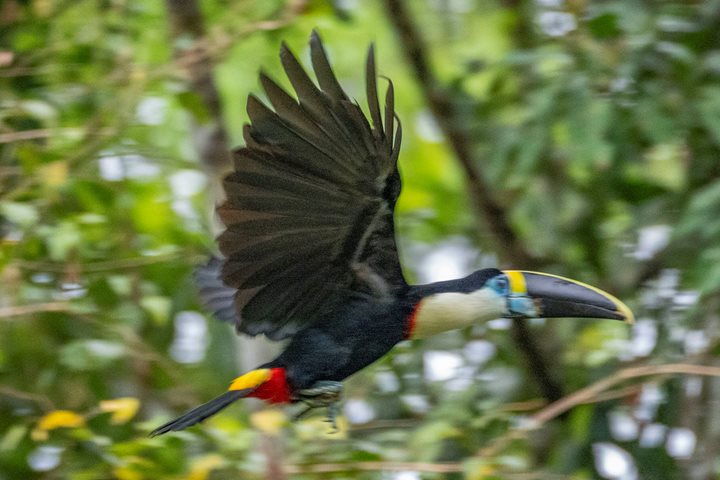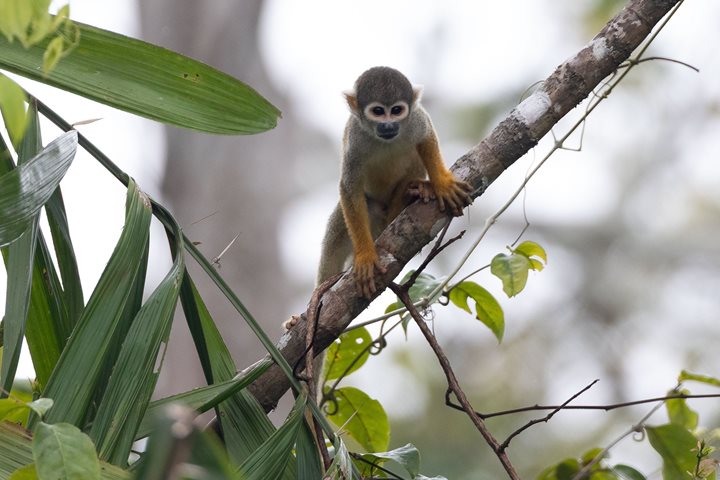We went to the place where wild things live, deep into the Pacaya-Samiria National Reserve. Did you know the chin of a giant river otter is white, the exhalation of a pink dolphin sounds like passing gas, capybaras graze on grass at the river’s edge, jabaru’s fly in thermals just like turkey vultures, and fer de lance can swim? We had a very busy morning. There were also sightings of howler monkeys, squirrel monkeys, and some seldom-seen birds including limpkin, both scarlet and blue and yellow macaws, black-bellied whistling ducks and the prime bird sighting of the day, a black and white hawk eagle.
The diversity and concentration of wildlife was astounding. At one point I put my binoculars up and without moving, in the field of view was a black-collared hawk, an Amazon kingfisher, a neotropic cormorant, a turkey vulture, and a great egret. How can so many different birds find a niche here? Easy, think fish. With the diversity of birds, their hunting strategies and the size of fish they go after, each can find a meal and coexist with the others. In the case of the turkey vulture, every environment needs a garbage man.
The otter family had at least three adults and three babies. The kids were stuffed into a riverside burrow while the adults snorted and observed the boatload of people floating in the stream. The capybara grazed alongside the river in a lovely picturesque setting, green grass, yellow flowers, and forest backdrop. We played hide-and-seek with the fer de lance in a patch of water hyacinth, always staying a safe distance with us in the skiff and the snake in the waterweeds.
When we saw the whistling ducks, our naturalist commented that they were migratory birds and that some years he doesn’t see any. That brings to home an important point with Preserves, Reserves, and National Parks. Protecting one area of land, no matter how expansive, is not going to provide safe refuge for all the inhabitants all the time. We need to think globally and look at many aspects, including migratory patterns and routes. One stopover lost could mean the end of the road for a species, in quite the literal sense.
We ended our day with a visit to the little village of Urarinas on the Zapote River. It turned out to be a four-sloth day for us as we found two sloths, one practically dangling over our heads as we walked to the village, and then two more in trees along the river.
We have a need for the wild places, and the wild things in them help to feed our spirits and our souls. Let’s make sure we think ahead and save these places, if not for future generations, and ourselves, perhaps just for the inhabitants that depend on them for survival.









